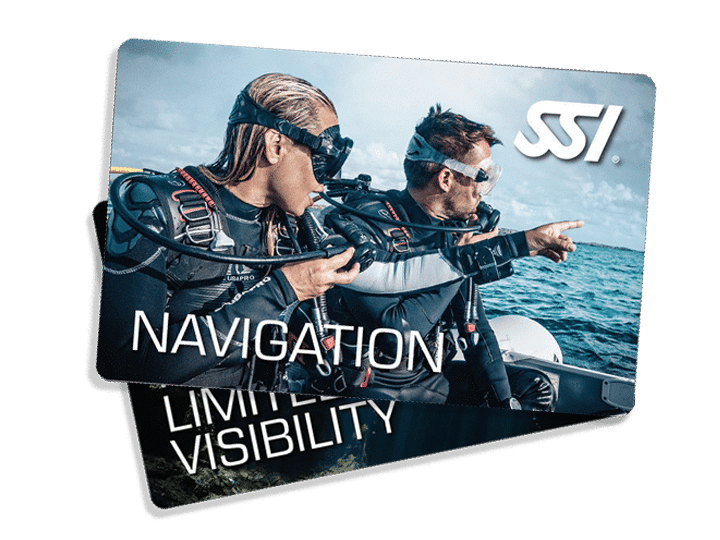Navigation and Limited Visibility
Find your way…anywhere

- One full day in the classroom and pool
- Open watyer dives with specific skills required for certification
The details
Starting dates
- Saturday, March 22, 2025
- Sunday, May 25, 2025
- Sunday, July 27, 2025
- Sunday, September 28, 2025
- Saturday, November 8, 2025
Classes require a minimum of three people to run as scheduled. If fewer than three people sign up, we reserve the right to either cancel the class or impose a $100 surcharge.
Please be aware that, while we make every effort to keep our listings accurate and up to date, you should always call the store to confirm starting dates and times.
- Be at least 10 years old
- Open Water Diver certification
- Completed medical history form
$250/person includes:
- All academic and confined-water instruction
- Self-study materials
- Private instruction available at an additional cost
You must still complete two or more open-water training dives for certification. These are $100 each.
You supply:
- Swimsuit, towel
- Mask, snorkel, scuba fins, boots
- Weight system, weights
- Adequate exposure protection
- One cylinder
- Buoyancy Control Device (BC)
- Regulator/alternate air source
- Dive light
- SMB with overpressure valve, reel
- Audible surface signal, knife/cutting tool
Items other than mask/snorkel/fins may be available for rental
Students are also responsible for:
- All air or gas fills
- Dive site admission or charter fees
- Transportation to and from dive sites
- Accommodations and meals, as needed
Plastic, photo-ID certification card, if desired (digital card provided at no charge)
To get to an unfamiliar location on land, we consult a map, road signs or GPS. Under water, there are none of these things. You can, however, use a compass as a directional reference. But, the compass is only as good as your working knowledge and experience using it correctly.
When you begin and end your dive at the correct location, you feel good, look good and conserve energy. But not everyone has a good sense of direction, especially underwater.
Hints for more successful navigating:
- A short pencil is better than a long memory.
- Know which leg is dominant to account for deviation.
- Have a plan and stick to it.
- Pay attention to how strong and in which direction the current is running for adequate compensation.
Limited visibility slows progress by reducing speed and kick cycles. Gently tilting your head and partially flooding your mask gives an easy reminder of which is UP. There may come a time when you must rely solely on equipment for navigation. At such times, skills practice, training and preparation are needed to navigate successfully.
Ask a question
Use this form to ask us about this specific course — or you can simply stop by the store or call (504) 888-4882
